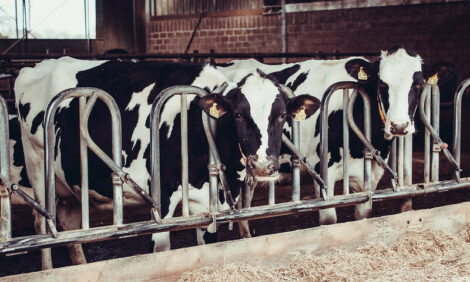



Autumn parasite risk requires action from livestock farmers
The risk of parasitic disease and production loss from gastrointestinal worms and liver fluke is expected to be high this autumn, according to Merial Animal Health and the NADIS Parasite Forecast. Sheep and cattle farmers are advised to implement parasite control plans to reduce the risk to animals through winter.Prolonged wet and mild weather in recent months has given rise to late flushes of infective larvae on pasture. Sheep are likely to face increased challenge from gastrointestinal worms in the coming months that could lead to parasitic gastroenteritis (PGE). Heavy infestations of gutworms may cause foetid diarrhoea (black scour) and rapid weight loss.
Worm-burdens in lambs slow growth and may delay finishing times. In overwintering breeding animals worm burdens may reduce thrive over winter, leading to weight loss and lack of condition. A parasite control plan including targeted anthelmintic treatments for worms should be followed, with advice from the farm vet or animal health adviser, to reduce the impact on production and lessen pasture contamination.
Merial Animal Health’s Ruminant Technical Manager, Sioned Timothy, says: “Its good practice for sheep farmers to monitor liveweight gain in lambs or perform worm faecal egg counts (FEC) to determine the need for anthelmintic treatment of lambs at this time of year. Generally speaking, blanket pre-tupping treatments should be avoided, and instead farmers should target only at leaner ewes, gimmers, or sheep with dags.
The number of ewes requiring treatment at this time of year should make up no more than 5% of the group. If, despite good grazing, more than 5% of a flock are in poor condition farmers should ask their veterinary surgeon to investigate the potential causes.”
Whilst anthelmintic treatment of all breeding females pre-tupping is rarely necessary, rams are often neglected at this time of year. Performing FECs will help identify whether anthelmintic treatment of these individuals is necessary.
Industry representatives are urging sheep farmers to improve their knowledge of the and symptoms of liver fluke, the parasites lifecycle and the risk factors that can contribute to disease outbreaks. Their veterinary surgeon or animal health adviser are well placed to help assess the risk at farm level and to formulate a bespoke prevention strategy to protect flock welfare and profitability.
There is a high risk of acute fluke in sheep in western Scotland and south Wales this autumn. Treatment for acute fluke will be necessary on farms in high-risk areas from October, especially where there is a historic liver fluke challenge.
Sheep with acute fluke infestation may simply be found dead without prior signs of illness. Post-mortem examination is essential to establish a diagnosis of acute fluke. All sudden deaths should be investigated to allow for immediate preventative measures. Less severe clinical signs of fluke include reduced grazing, rapid weight loss, weakness, abdominal pain, anaemia, and animals being slow to gather.
Liver fluke disease can largely be controlled in sheep by administration of appropriate treatment, at the correct time, as a part of a wider flock health plan. Triclabendazole is effective against young, immature fluke (the cause of acute fluke disease), however advice must be sought where triclabendazole-resistance is suspected or confirmed on farm.
Treatments that contain closantel or nitroxynil (TRODAX®) are effective against late immature and mature fluke from around 7 or 8 weeks after infection, and provide an alternative treatment option where the risk of acute fluke disease is low. Accurate dosing according to weight is essential to reduce the risk of toxicity.
Cattle may also be at risk from liver fluke in high-risk areas this autumn, particularly western Scotland and south Wales.
Ms. Timothy advises that: “Cattle exposed to liver fluke infection should be dosed at housing to immediately remove the impact of developing and adult flukes on growth and feed efficiency.
“The choice of treatment will be influence by risk of infection; meat/milk withdrawal periods; risk posed by other parasites; and ease of administration. Straight products containing closantel or nitroxynil (TRODAX®) are effective against late immature and mature fluke and help reduce the reliance on triclabendazole. Combination products such as IVOMEC SUPER® (ivermectin and clorsulon) may be considered where farmers are also treating for worms at the same time.
Once treated, cattle should be moved onto fluke-free pastures or housed as soon as possible. Cattle should be tested later in the housing period for the presence of adult fluke, or given a second treatment to ensure all fluke are removed.”
Very few products for treating liver fluke are available for use in adult dairy cattle. Veterinary advice should be sought to determine how fluke control can be effectively achieved, particularly if cattle are grazing high risk pastures.
TheCattleSite News Desk


